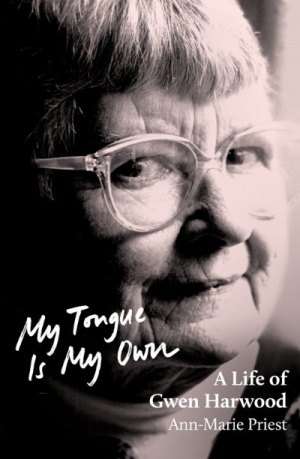Ann Marie Priest
Ann-Marie Priest reviews 'This Devastating Fever' by Sophie Cunningham
Early in This Devastating Fever, a writer named Alice has a difficult conversation with her agent, Sarah, about the novel she is working on, which she is considering calling This Devastating Fever. The novel is supposed to be about Leonard Woolf, left-wing journalist and activist, novelist, publisher, best-selling memoirist, and husband of Virginia Woolf, whom he outlived by almost thirty years. Things are not going well for Alice, however. She cannot settle on a theme (the parallels between Leonard’s era and her own proliferate alarmingly) or an approach (experimental approaches have failed her, historical fiction bores her), and her agent is increasingly concerned. In its current iteration, the book is both fiction and non-fiction – which makes it potentially unsaleable, Sarah tells Alice sternly. Forced to choose, Alice picks fiction.
... (read more)John Harwood on Gwen Harwood and the perils of reticence | The ABR Podcast #108
Ann-Marie Priest’s My Tongue Is My Own, published by La Trobe University Press and reviewed in our June issue, is the first authorised biography of the Australian poet Gwen Harwood (1920–1995). Unsurprisingly, this was not the first attempt to record the life of one of Australia’s most loved and admired poets. In an exclusive feature for ABR, John Harwood reflects on the conflicting motives behind his literary executorship of his mother’s estate – an estate holding the secrets to an at-times fractious marriage between two opposing temperaments.
... (read more)Stephanie Trigg reviews 'My Tongue Is My Own: A life of Gwen Harwood' by Ann-Marie Priest
The Red Queen’s impossible rule offers a striking allegory of the biographer’s dilemma. While your subject is still alive, it seems reasonable to get to know them and build a relationship of trust with them. In this way you might be better able to understand their private and intimate worlds. If your subject is a writer, you might become more confident in your ability to weave closer correspondences between their life and work. But if you then become privy to their secrets, and perhaps even come to love them as a dear friend, it becomes almost impossible to write about them dispassionately: to ‘cut’ them with your knife and fork.
... (read more)The Harwood Memorial Fruitcake Award: The parodic inventiveness of Gwen Harwood
For much of her career, Gwen Harwood (1920–95) was best known for her hoaxes, pseudonyms, and literary tricks. Most notorious was the so-called Bulletin hoax in 1961, but over the years she orchestrated a number of other raids on literary targets, mainly aimed at challenging the power of poetry editors and gatekeepers. For L’Affaire Bulletin (as she sometimes called it), she submitted to that august magazine, under the pseudonym Walter Lehmann, a pair of seemingly unexceptionable sonnets on the theme of Abelard and Eloisa. Only after the poems were published did the Bulletin discover that they were acrostics; read vertically, one spelled out ‘So long Bulletin’, and the other, ‘Fuck all editors’.
... (read more)Ann-Marie Priest reviews 'All the Lives We Ever Lived: Seeking solace in Virginia Woolf' by Katharine Smyth
At first glance, the premise of this book seems dubious. Katharine Smyth, an American woman in her mid-twenties, turns to the life and work of Virginia Woolf for solace after the death of her father. There is no doubt that Woolf writes brilliantly about death, particularly in the novel Smyth focuses on, To the Lighthouse (1927), which fictionalises the death of Woolf’s mother, Julia Stephen. But what comfort could Smyth hope to find in the work of a writer who herself refuses any of the usual consolations? After losing her mother and her elder half-sister, Stella, in her early teens, and then her father, Leslie, and her elder brother, Thoby, in her twenties, Woolf knew that there was no solace to be found. Her only comfort was that at least ‘the gods (as I used to phrase it) were taking one seriously’.
... (read more)Fellowships galore

Ann-Marie Priest reviews 'Katherine Mansfield: The early years' by Gerri Kimber
Katherine Mansfield is one of those shimmering literary figures whose life looms larger than her work. This is not because her writing lacks value: Mansfield’s spiky ...
... (read more)Ann-Marie Priest reviews 'The Joyce Girl' by Annabel Abbs
In 1934, Lucia Joyce, then in her late twenties, entered analysis with Carl Jung, at the behest of her father, James Joyce. She had been in and out of psychiatric care for several years, but it was still not clear exactly what was wrong with her – if anything. A few years earlier, as a dancer in the Isadora Duncan style, she had been thought to have a genius akin ...
Ann-Marie Priest reviews 'Awakening' by Eileen Chanin and Steven Miller
One of the few Australian-born female sculptors of the early twentieth century was a Ballarat girl, Dora Ohlfsen, who went to Berlin in 1892, at the age of twenty-three, to study music and found herself three years later in St Petersburg studying the art of the medallion. She was in Russia because she had fallen in love with the Russian-born, German-speaking Elena v ...
Ann-Marie Priest reviews 'Vanessa and Her Sister' by Priya Parmar and 'Adeline' by Norah Vincent
Given the plethora of non-fiction books about Virginia Woolf and her circle, ranging from biographies to memoirs to coffee-table offerings of all kinds, it is tempting to wonder why we need novels as well. For intimacy and immediacy we have the Bloomsberries’ own accounts of themselves in the many voluminous editions of their letters and diaries, not to mention po ...








